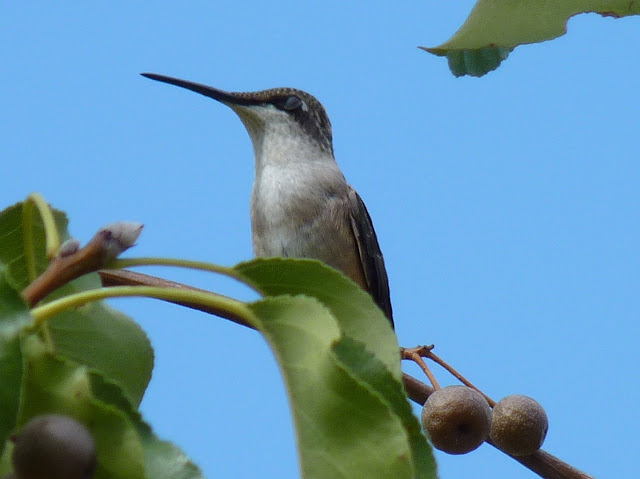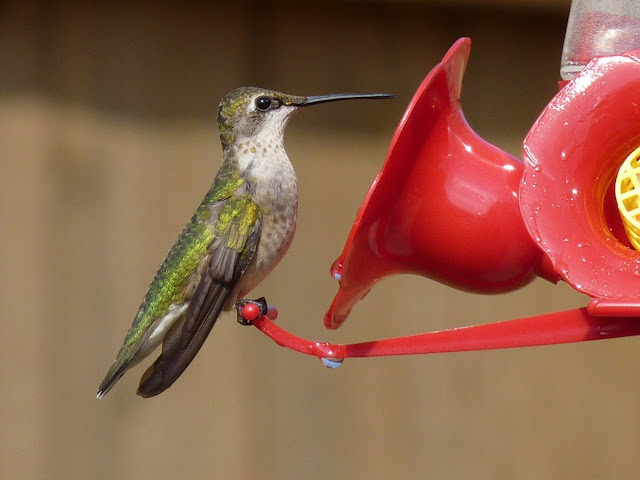Observing and learning about these tiny, aggressive birds has been such a joy! My prior experience with hummingbirds consisted solely of a few occasions where one happened to whiz by me. By the time I said "hey, thats a--" the bird would inevitably be gone.
This summer's adventure started by placing two feeders in my small backyard. A large piece of property isn't necessary to attract these birds. My neighbor has three feeders hanging on her front porch. Another neighbor has a feeder stuck in the landscaping in front of his house.
Hummingbirds are attracted to the color red, so most commercially available feeders are red in color. It didn't hurt that I had a large red patio table umbrella near one of the feeders either! I noticed a few hummingbirds checking out the umbrella to find a place to feed from it, so they may have been attracted to the large red "bloom" of the umbrella.
Ignorant of any controversy, I initially purchased a commercial nectar mix for the feeders that included red dye. Even though the mix included a disclaimer that it was "USDA approved" and "non-harmful" to hummingbirds, hummingbird experts discourage the use of red dye as unnecessary and potentially harmful. They recommend a simple mix of sugar and water with a ratio of 4:1, which is much cheaper than a commercial mix anyway. I switched from the red mix to sugar water mid-summer without any noticeable difference in interest from the birds.
The primary hummingbird observed in the Southeast is the Ruby-Throated Hummingbird, and this is the sole hummingbird that frequented my feeders. The adult male has iridescent feathers covering its throat, called its "gorget," which reflect yellow, orange, or red in the sunlight. The gorget may also look black in limited light.
 |
| Adult Male with Orange Gorget |
The adult female typically has a clear white throat, although may have a few iridescent feathers. Females also have white tips on their tails. The female is larger than the male, with a longer beak.
 |
Adult Female
|
Juvenile males are virtually indistinguishable from females. Late in the Fall, red feathers may start appearing in the gorget of the juveniles that identify them as males.
 |
| Juvenile Male |
The birds feed through a very long tongue that is ridged on each side and forked on the end.
Coming soon in Part 2...hummingbird behavior, including group shots and fight photos!























.JPG)




.jpg)





















